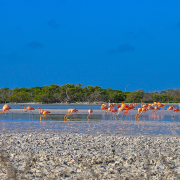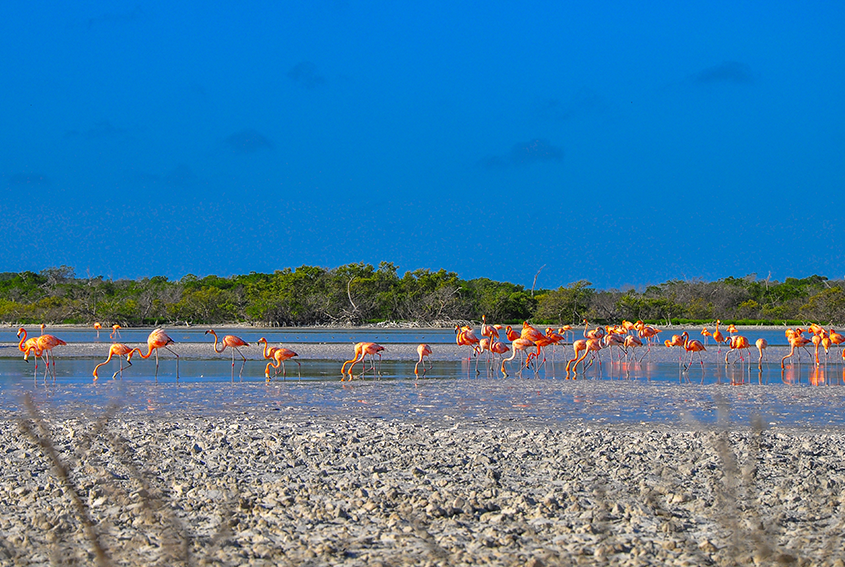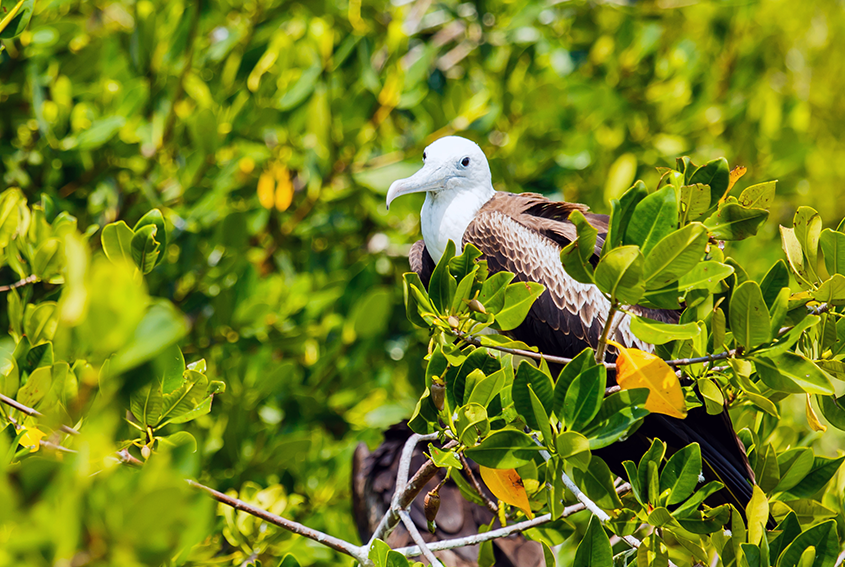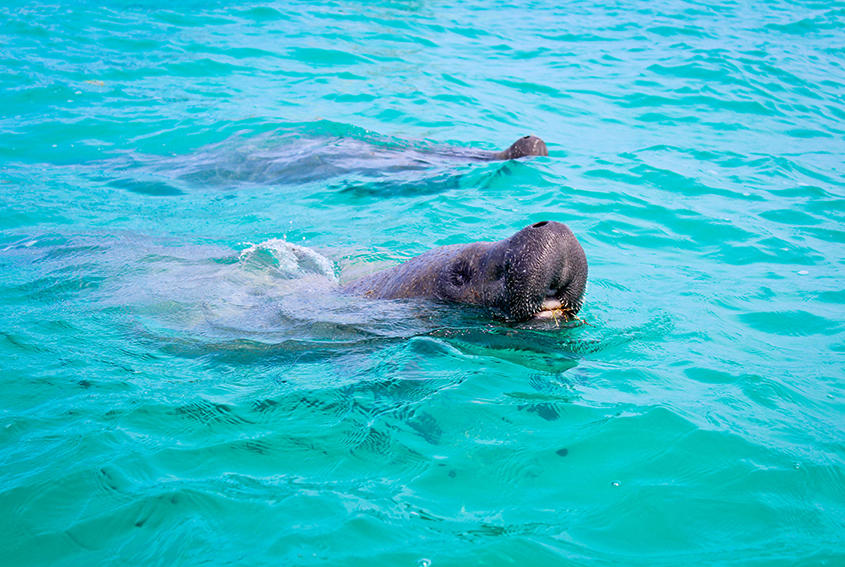This post is also available in:
![]() Spanish
Spanish
From eagle ray and sailfish migrations early in the year to whale shark encounters and sea turtle nesting in the summer, whatever the season, the Yucatan Peninsula is full of nature’s wonders. In the fall it is the turn of the birds to wow nature watchers as more than 150 million birds take flight and head south for the warmth of the Yucatan following what is one of the world’s most important migratory routes for birds. The area’s coastal lagoons and salt flats and inland jungles host an additional 226 species of migratory birds each winter. Large and small, they range from birds of prey to ducks, waders, shorebirds, songbirds and even hummingbirds, a magnet for birdwatchers and nature lovers.
Some birds spend the winter season in the Yucatan or pause to feed and rest on the coast before continuing their journey south. Migrants range from arctic terns, ospreys, wood storks and white pelicans from northern Canada to teal, and shoveler ducks and the striking painted bunting. The smallest migrant is surely the ruby-throated hummingbird, which makes an incredible 30-hour journey across the Gulf of Mexico non-stop!
Thomas More Travel offers eco tours to the biosphere reserves of Rio Lagartos, Sian Ka’an, and Contoy where nature lovers will see plenty of colorful bird species in the mangroves and jungle.
Rio Lagartos Biosphere Reserve
First stop during the fall for water and food for many exhausted migrant birds crossing the Gulf of Mexico, Ría Lagartos Reserve protects 60,348 hectares of mangroves, salt marshes, dunes and tropical forest that is home to jaguars, monkeys, crocodiles and 365 bird species, including thousands of Caribbean flamingos, North America’s largest nesting colony of these elegant birds.
There are so many flamingos that they paint the horizon pink in the lagoons and salt flats. Fishermen from the waterfront village of Río Lagartos offer boat trips along the ria or estuary and through the mangroves to the flamingo feeding grounds. In addition to the spectacle of watching flamingos taking wing, coming into land or feeding in the shallows, keep a lookout for flocks of white pelicans, species of duck, skimmers, limpkins, plovers, reddish and snowy egrets, roseate spoonbills, peregrine falcons and kingfishers.
Contoy
A two-hour boat ride to the north of Cancun, the tiny desert island of Contoy is known as la isla de los pajaros or “the island of the birds and with good reason. A protected area since 1961, and declared a national park in 1998, it is a refuge for 150 species of native and migrant birds, including one of the largest populations of brown pelicans in the Caribbean. Colonies of frigate birds, double crested cormorants and ten members of the heron family such as the great blue heron, snowy egret and the yellow-crowned night heron roost in the mangroves. During the winter months, the island is a refuge for migratory ducks, plovers, sandpipers, oystercatchers and other shore birds.
Sian Ka’an Biosphere Reserve
Straddling northern and central Quintana Roo, this UNESCO World Heritage Site comprises 1.3 million acres of tropical forest, mangroves, Caribbean beaches, and a 110-kilometer-stretch of coral reef. The biosphere reserve was established by government decree in 1986 to protect these fragile ecosystems.
Sian Ka’an is home to 103 different mammals including the jaguar, puma, ocelot, peccary, tapir, howler and spider monkeys, and the West Indian manatee. It has one of Mexico’s largest crocodile populations and is an important nesting area for sea turtles.
The reserve is also home to over 350 species of bird, and you are bound to notch up a respectable tally of sightings during a visit. Sixteen varieties of heron and egret – including the kuka or boat-billed heron, tiger, blue and green heron –can be seen in the mangroves, along with wood storks, ibis and roseate spoonbills. Flamingos are occasional visitors to the coastal lagoons. Migrant warblers, finches and hawks join year-round forest dwellers such as parrots, motmots and keel-billed toucans. The reserve also has a large breeding population of ospreys and protects a tiny colony of the rare jabiru stork, the largest bird in the Americas, in the wetlands.
Thomas More Travel can help you organize trips to these destinations and many more in the Mexican Caribbean and Yucatan.




